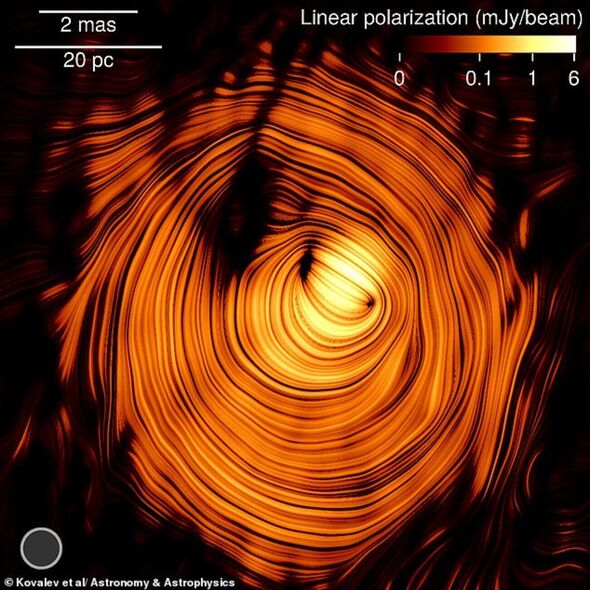Science
Scientists Discover Cosmic ‘Eye of Sauron’ in Deep Space

A recent discovery has unveiled a cosmic phenomenon resembling the fictional “Eye of Sauron” from the *Lord of the Rings* series. Identified as the blazar PKS 1424+240, this celestial entity emits a powerful jet of plasma and energy, located billions of light years away from Earth. Its unusual characteristics have left scientists intrigued, as it combines extraordinary brightness with surprisingly slow movement.
Blazars are a type of galaxy powered by supermassive black holes, and PKS 1424+240 stands out as one of the brightest known. Researchers have long struggled to understand how this blazar can emit such high levels of brightness while appearing to move slowly, contradicting previous theories that only the fastest jets could achieve such luminosity.
The discovery was made possible through a meticulous process that took over 15 years. Researchers utilized the Very Long Baseline Array, a system comprising ten radio telescopes, to compile ultra-precise observations. Lead author Yuri Kovalev from the Max Planck Institute for Radio Astronomy expressed the team’s astonishment at the findings. He stated, “We have never seen anything quite like it—a near-perfect toroidal magnetic field with a jet pointing straight at us.”
This unique alignment with Earth significantly amplifies the high-energy radio emissions from the blazar. Co-author Jack Livingston noted, “This alignment causes a boost in brightness by a factor of 30 or more.” The phenomenon creates an optical illusion that makes the jet appear to move at a slower pace than it actually does.
Radio signals further demonstrated that the structure of the jet is likely spiral or doughnut-shaped, a configuration that aids in accelerating particles to extreme energies. These findings have been published in the journal Astronomy & Astrophysics, contributing valuable insights into the behavior of cosmic jets.
The implications of this discovery extend beyond mere curiosity, as they challenge existing theories about the nature of blazars and their emissions. As scientists continue to study PKS 1424+240, the potential for new understandings of black holes and cosmic phenomena grows, promising to deepen our knowledge of the universe.
-

 Entertainment3 months ago
Entertainment3 months agoAnn Ming Reflects on ITV’s ‘I Fought the Law’ Drama
-

 Entertainment4 months ago
Entertainment4 months agoKate Garraway Sells £2 Million Home Amid Financial Struggles
-

 Health3 months ago
Health3 months agoKatie Price Faces New Health Concerns After Cancer Symptoms Resurface
-

 Entertainment3 months ago
Entertainment3 months agoCoronation Street’s Carl Webster Faces Trouble with New Affairs
-

 Entertainment3 months ago
Entertainment3 months agoWhere is Tinder Swindler Simon Leviev? Latest Updates Revealed
-

 Entertainment4 months ago
Entertainment4 months agoMarkiplier Addresses AI Controversy During Livestream Response
-

 Science1 month ago
Science1 month agoBrian Cox Addresses Claims of Alien Probe in 3I/ATLAS Discovery
-

 World2 weeks ago
World2 weeks agoBailey Announces Heartbreaking Split from Rebecca After Reunion
-

 Health4 months ago
Health4 months agoCarol Vorderman Reflects on Health Scare and Family Support
-

 Entertainment4 months ago
Entertainment4 months agoKim Cattrall Posts Cryptic Message After HBO’s Sequel Cancellation
-

 Entertainment3 months ago
Entertainment3 months agoOlivia Attwood Opens Up About Fallout with Former Best Friend
-

 Entertainment2 weeks ago
Entertainment2 weeks agoCoronation Street Fans React as Todd Faces Heartbreaking Choice









